Quilotoa crater lake, hidden away at an impressive 3900 meters altitude, is truly one of Ecuador’s best-kept secrets. The stunning views here are breathtaking—literally, given the altitude—and reward those of us who venture a bit off the usual tourist path.
Laguna Quilotoa is a collapsed volcano nestled in the western Ecuadorian Andes. The caldera lake, with its striking electric-blue waters, offers a surreal panoramic view that left us completely awestruck. Whether you’re up for a hike, a kayak ride, or just want to soak in the scenery from one of the viewpoints, this place won’t disappoint.
But be warned—the high altitude is no joke! At 3900 meters, we definitely felt the thin air. I’d highly recommend taking ChlorOxygen a week or two in advance to help acclimate. And if you’re hunting for that jaw-dropping social media photo, Quilotoa has you covered!
We’ve visited Quilotoa lake during our Ecuador’s mainland journey. You can also check it in my video about the trip:
Trust me, conquering Quilotoa’s 3900m altitude and planning the logistics was tricky – from figuring out transportation to preparing for the unpredictable weather and altitude effects. I wish I had known about this local travel agency before struggling with all these details! Get a FREE personalized trip quote and avoid the mistakes I made. Your booking helps support both this blog and local Ecuadorian communities.
Table of Contents
Plan perfect trip to Ecuador & Galapagos
I spent countless hours researching everything about traveling to Ecuador, and I created this blog for fellow travel enthusiasts who want the best, most reliable information. But if you want to save time, we’ve partnered with the top local agency to plan your dream trip.
How to Get to Quilotoa, Ecuador
Getting to Quilotoa By Bus
From Lacatunga
Most routes to Quilotoa connect through Latacunga, making it the main transit hub. From there, we took a bus to Zumbahua, which is the closest town to the lake. The fare was just $2 and took about two hours. After arriving in Zumbahua, you either hop on a local bus or grab a pickup truck to reach the entrance.
Keep in mind, though, that the bus schedule is not very reliable—especially if you’re planning a day trip. I’d recommend double-checking the departure times to avoid getting stuck overnight. If you’re flexible, staying overnight in Quilotoa or Zumbahua is a great option for exploring more at a leisurely pace.
From Quito
There are no direct buses from Quito to Quilotoa, so you’ll need to make a stop in Latacunga. We took a bus from Quito’s Quitumbe terminal, which was comfortable and easy to navigate. Buses run quite frequently—usually every 10 minutes—so you won’t have to wait long. The ride cost us less than $3 per person and took about an hour.
Once we reached Latacunga, we followed the route I mentioned earlier: a bus to Zumbahua, then a local ride to Quilotoa. It was straightforward, and the scenery along the way made the journey enjoyable.
Getting to Quilotoa By Car
Many travelers opt to rent a car to reach Quilotoa, especially if you’re starting from Quito, Baños, or other cities in Ecuador. For us, this was the best choice. The drive from Quito is roughly 178 kilometers, mostly along the Pan-American Highway, and takes about 3 hours. It was an easy drive, with beautiful landscapes along the way, and plenty of parking available once you arrive at the crater.
This is exactly how we got there, and if you’re curious, you can check out the road conditions and our journey in the video I shared.
By Day Tours
Most foreign travelers opt to book a Quilotoa day trip, which we also considered before deciding to drive ourselves. This option is great if you want to avoid the hassle of navigating public transport or driving, and it gives you more flexibility to make stops along the way. The road leading up to Quilotoa passes through some of Ecuador’s most stunning Andean landscapes, including Tigua and Zumbahua. Trust me, the views are so picturesque you’ll want to pause for photos every chance you get!
For English-speaking tourists, many book their tours through Viator. Prices for these day trips generally range from $100-200 USD per person, and most packages include hotel pickup and drop-off, breakfast, and a guided tour. We learned that depending on the day, some tours even include a quick stop at a local market, which is a nice touch.
Keep in mind, though, that these tours usually start quite early—around 6:30 a.m.—and return in the evening around 7:00 p.m. So, definitely bring some lunch, snacks, and plenty of water to keep you going throughout the long day!
Things to Do in Quilotoa
Quilotoa Loop
Crater Lake in Quilotoa has become famous for an adventure known as the Quilotoa Loop, which we were curious to explore. This route takes you deep into the heart of Ecuador’s Quichua-speaking indigenous communities, letting you experience their everyday traditions, customs, and beliefs firsthand.
The loop passes through several quaint Andean villages, including Quilotoa and Latacunga. Honestly, the highlight for us was definitely the breathtaking turquoise waters of the Quilotoa crater lake. But beyond that, the loop offers much more, such as the Ilinizas Reserve with its striking Twin Peaks volcanoes, stretches of cloud forest, and the chance to see local artisans at work in traditional markets. It’s like stepping into a world where centuries-old culture thrives.
The Quilotoa Loop felt like a journey through history. Walking along ancient trails surrounded by glacier-capped volcanoes, we couldn’t help but imagine the countless stories these paths have witnessed over the years. If you’re looking for an authentic experience that blends nature, culture, and history, this loop is truly a once-in-a-lifetime adventure.
Hiking in Quilotoa
Have questions about your upcoming Galapagos trip? Join my Galapagos Reddit community and ask other travelers who recently visited the islands. Get up-to-date tips, real experiences, and honest advice from other travelers (I ban tour agencies and resellers).
Hiking down into the Quilotoa crater was definitely an adventure we were excited to take on. The trail winds its way to the lakeshore, offering plenty of photo opportunities as you descend. It only took us about 20-30 minutes to get down, although the sandy, steep terrain required some careful footing.
But let me tell you — the climb back up is a whole different story! At that altitude, the hike can really take your breath away (literally!). We saw most people heading back within an hour, but we decided to take it slow and soak in the views. After all, there’s no rush when you’re surrounded by such incredible scenery.
If you’re not up for the challenging ascent, no worries! Locals are ready with mules you can rent for about $10, which honestly looked tempting after feeling the burn halfway up.
For those feeling adventurous, you can hike around the entire Quilotoa rim. We seriously considered it but let me warn you—this isn’t for the faint-hearted! The 7.5-mile loop winds along a narrow trail with tricky terrain, constantly going up and down. You’ll be exposed to the elements the whole time, with some sections having near-vertical drops.
The views from the rim are nothing short of spectacular, offering jaw-dropping panoramas of the crater lake and the surrounding Andean peaks. But make sure to pick a day with calm weather—strong winds could turn the experience into a real challenge. We decided to skip this hike due to the wind on the day of our visit, but it’s definitely on our list for next time!
Quilotoa Crater Lookout
Most visitors, including us, start at the main crater overlook (mirador) — and I can totally see why. The first glimpse of that brilliant turquoise lake is breathtaking. As soon as we arrived, we couldn’t resist grabbing our cameras. There are several wooden viewing platforms around, each offering fantastic angles of the crater and the shimmering lagoon below.
The best part? There’s a gorgeous viewpoint right next to the parking lot, so even if you’re not up for a hike, you can still enjoy those stunning views. But honestly, even if you plan to hike, take a few moments here to soak in the panoramic beauty of the entire caldera. It’s a view that’s simply unforgettable!
Plantlife & Bird Watching
Quilotoa offers a fantastic glimpse into the unique high paramo grassland landscape of Ecuador. As we explored, we came across the vibrant purple Andean Lupins and the striking orange Chuquirawa thistles, both of which are symbolic of the region. The bursts of color against the rugged terrain made the hike even more rewarding. It’s amazing how life thrives at such high altitudes — these plants are like little jewels dotting the landscape.
Camping and Kayaking
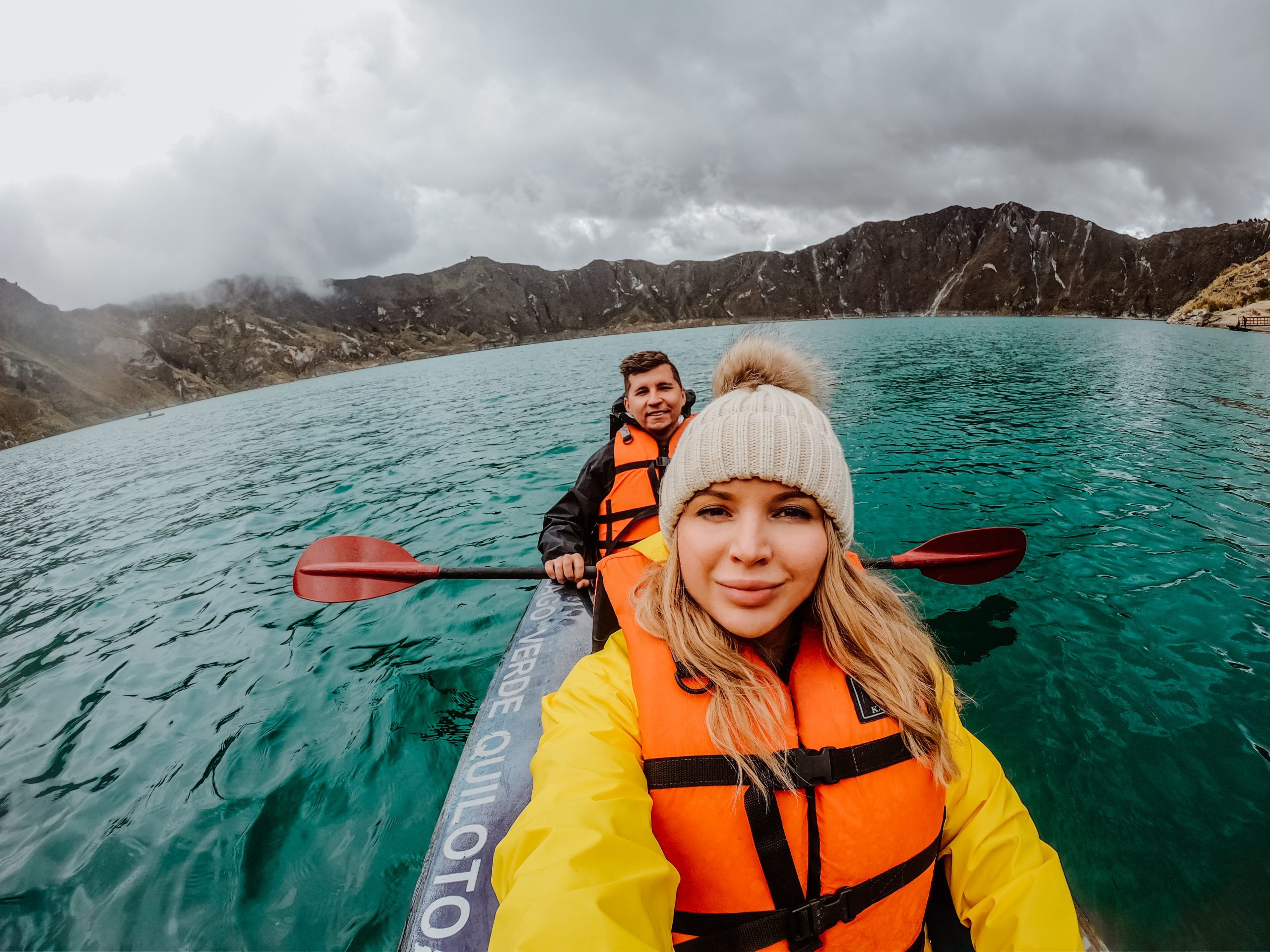
Visitors may take boat rides out on the lake, and kayaks can be hired from the same little port.
There’s even a campground nestled in a small forested area within the crater itself, perfect if you’re looking for an isolated spot surrounded by breathtaking views. But do be prepared for chilly nights — it gets cold up here!
We decided to try kayaking on the lake, which turned out to be one of the highlights of our visit. For just $3 USD per 30 minutes, we were able to paddle around and take in the stunning scenery from a whole new perspective. The peacefulness of being on the turquoise water, surrounded by towering crater walls, was an experience I won’t forget anytime soon!
Local Handicraft Shopping
As we explored the crater, we were greeted by a symphony of bird songs. The diversity of birds here is impressive — we tried spotting hummingbirds, doves, flower-piercers, and even a few ground tyrants and finches flitting around the area. It’s like nature’s soundtrack accompanying your hike.
At the end of our trek, we enjoyed browsing through the indoor crafts market right by the crater. There are also several little shops lining the street where locals sell handmade crafts and souvenirs. It’s a great way to pick up a few unique gifts while supporting the local community!
The woolen knitwear was a lifesaver for us since we hadn’t quite anticipated how chilly it would be at that altitude. You’ll find everything from cozy sweaters to colorful scarves — perfect if you’re feeling the cold. We also couldn’t resist checking out the painted masks and the fluffy guinea pig toys that are so characteristic of the region.
One of the best parts of shopping here is the friendly bargaining culture. We had fun negotiating prices, and it’s a great way to interact with the locals while snagging a few good deals.
Looking back, I really wish we’d planned more time at Quilotoa – there’s so much more to experience than just a day trip allows! Want to make the most of this incredible crater lake without the stress of figuring everything out yourself? Get a FREE personalized itinerary from my trusted local experts who know exactly how to prepare you for this adventure. Your booking supports this blog and local Ecuadorian businesses.
Best Time to Visit Quilotoa
We chose to visit Quilotoa during the off-season, and honestly, it was a great decision. The weather was a bit unpredictable with light drizzles here and there, but the peace and quiet more than made up for it. There were hardly any crowds, which made our experience even more special.
If you’re planning a trip, definitely consider early morning hikes. We set off right after sunrise, and the skies were clear with stunning views. It did get windy, though, so having layers was crucial. The temperature wasn’t too cold, but those gusts can catch you off guard, especially around the crater rim!
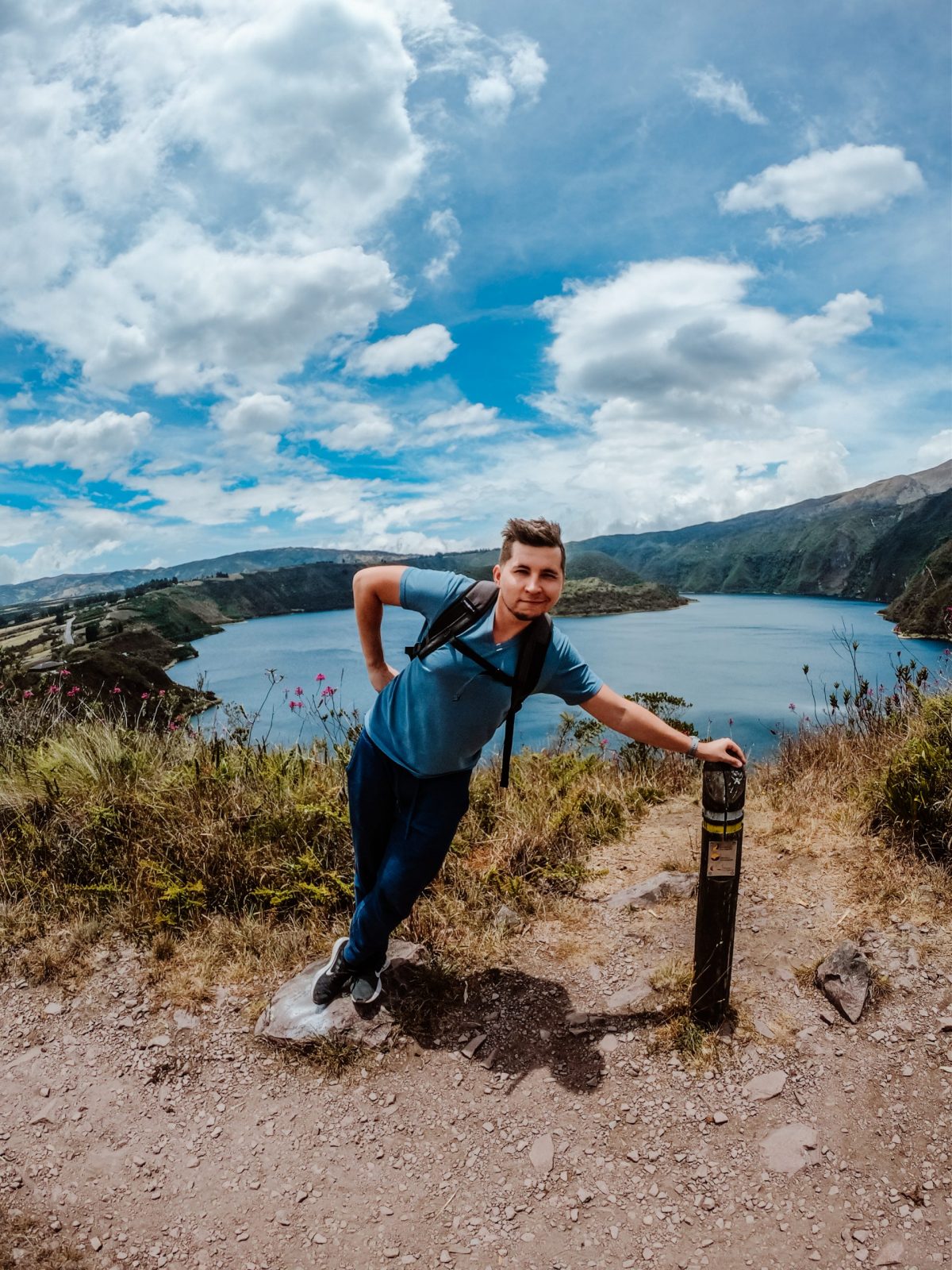
Planning trip to Ecuador?
My wife and I rented a car for 15 days and traveled from the northern part of Ecuador to the south, visiting amazing cities like Quito, Otavalo, Baños, Cuenca, and Guayaquil. Along the way, we explored iconic places such as Cotopaxi National Park, Quilotoa Lake, and many more breathtaking destinations.
Not many blogs cover traveling in Ecuador in detail, so I spent nearly three weeks creating this comprehensive Ecuador travel guide based on our trip. It’s packed with everything you need to know, and honestly, I consider it the best free travel guide about Ecuador out there.
If you’re planning a trip to Ecuador, don’t forget to use my link for discounted hotel prices through Booking.com. It’s a great way to support my blog while saving money on your accommodations!
Travel Tips When Visiting Quilotoa
Going to Quilotoa needs preparation so here are a few tips that I will share based on my experience:
- Acclimatize before going to Quilotoa and trying out strenuous activities.
- Be sure to pack proper clothing. Bring layers, scarves, wooly hats, and gloves.
- Because the terrain in Quilotoa is sandy and uneven, it is advisable to bring reliable hiking shoes.
- Quilotoa lodgings are basic, with little to no running water and modest food. Other settlements around the Quilotoa loop have more cozy and pleasant hostels such as Chugchilan and Isinlivi.
- To capture the entire crater lake in one frame, photographers will need a wide-angle lens.
- Bring snacks and drinking water with you. Although, there are also small shops in the area that sells basic food supplies.
Quilotoa Crater Lake truly blew us away—it’s one of those places that sticks with you. The drive from Quito was straightforward, and once we reached Latacunga, it felt like we were on a real adventure, leaving the busy roads behind.
We definitely recommend staying overnight if you have the time. We only planned for a day trip, but after seeing the incredible landscape, we wished we could’ve extended our stay. If you enjoy trekking, spending a couple of days here is absolutely worth it to fully take in the beauty of the region without feeling rushed.
Plan perfect trip to Ecuador & Galapagos
I spent countless hours researching everything about traveling to Ecuador, and I created this blog for fellow travel enthusiasts who want the best, most reliable information. But if you want to save time, we’ve partnered with the top local agency to plan your dream trip.


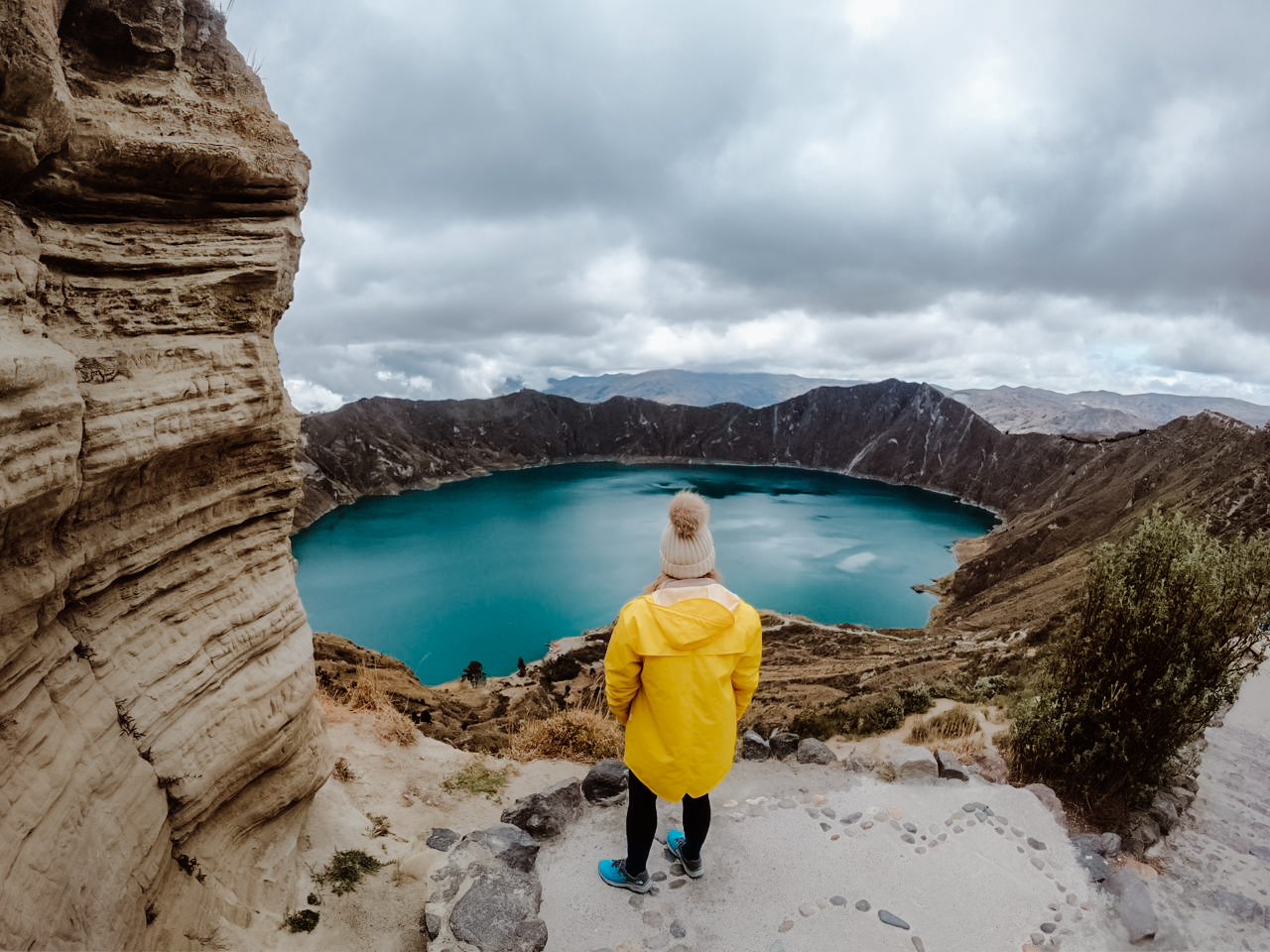

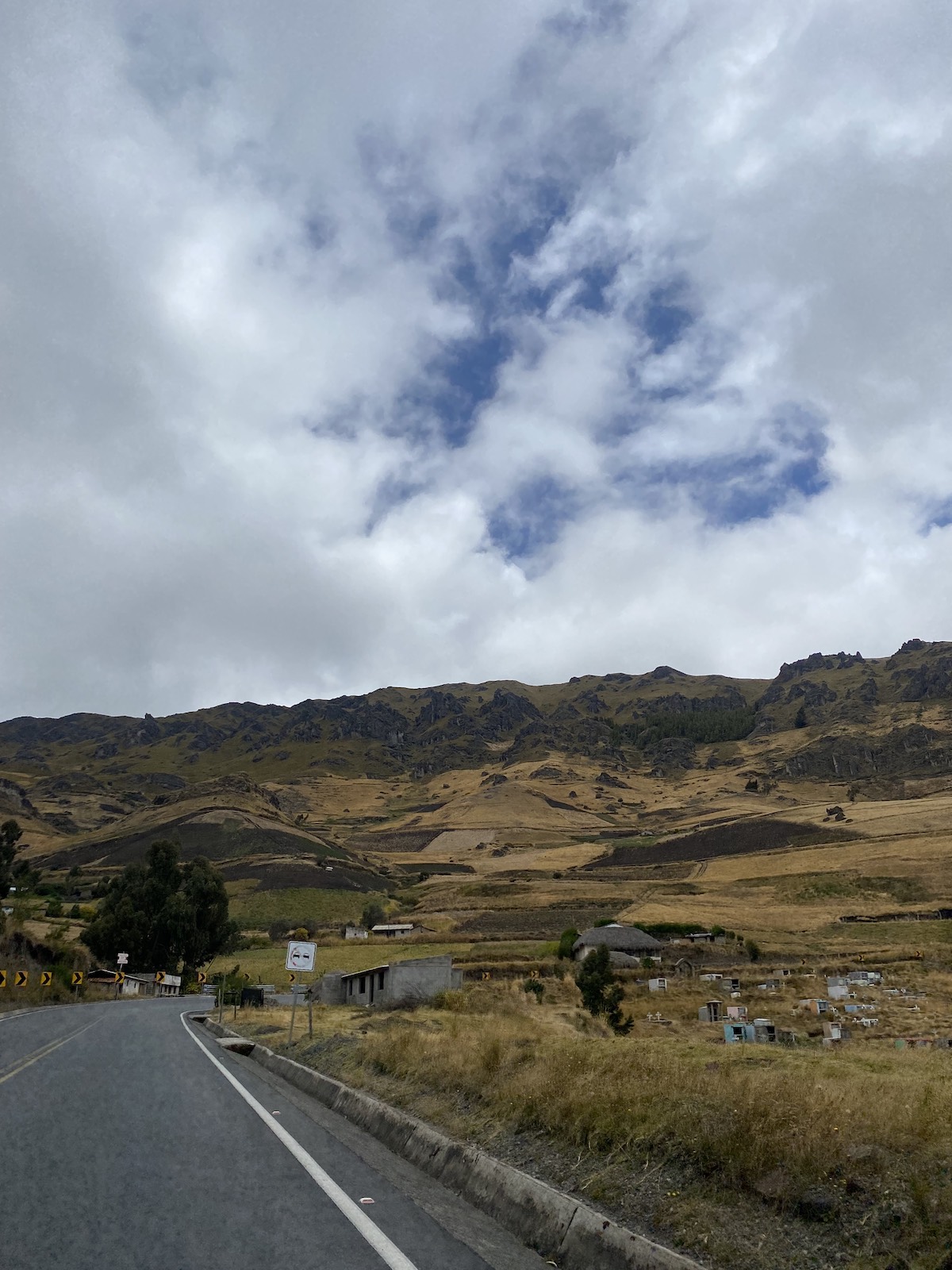
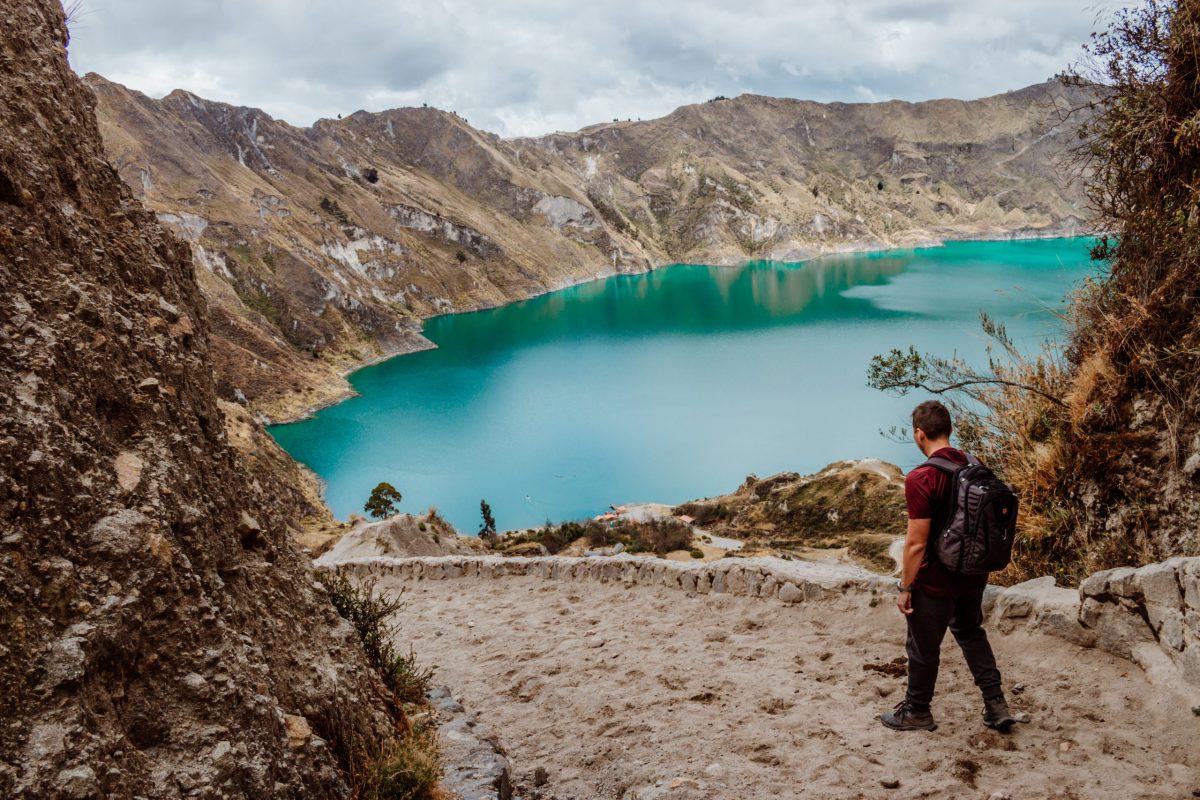
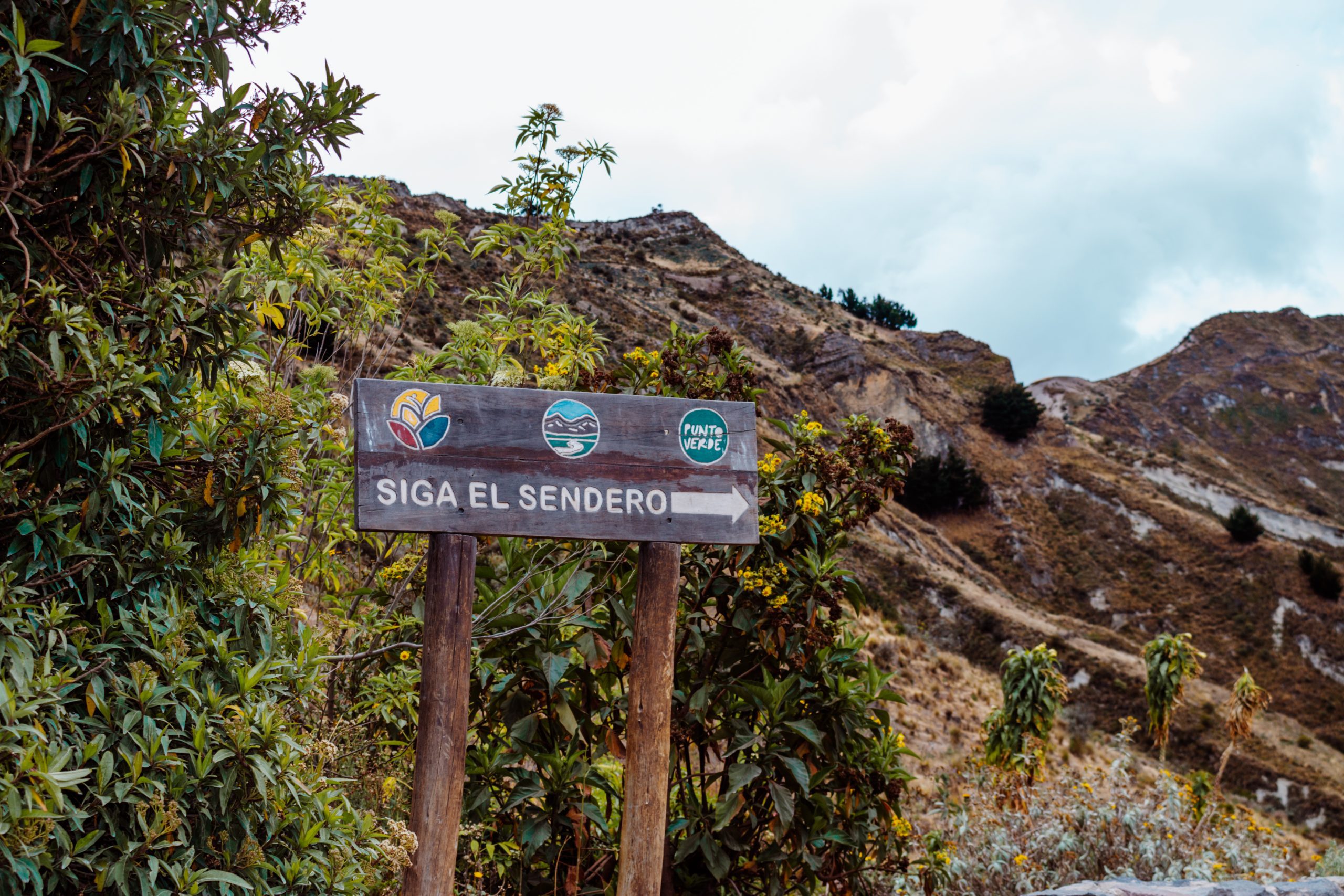
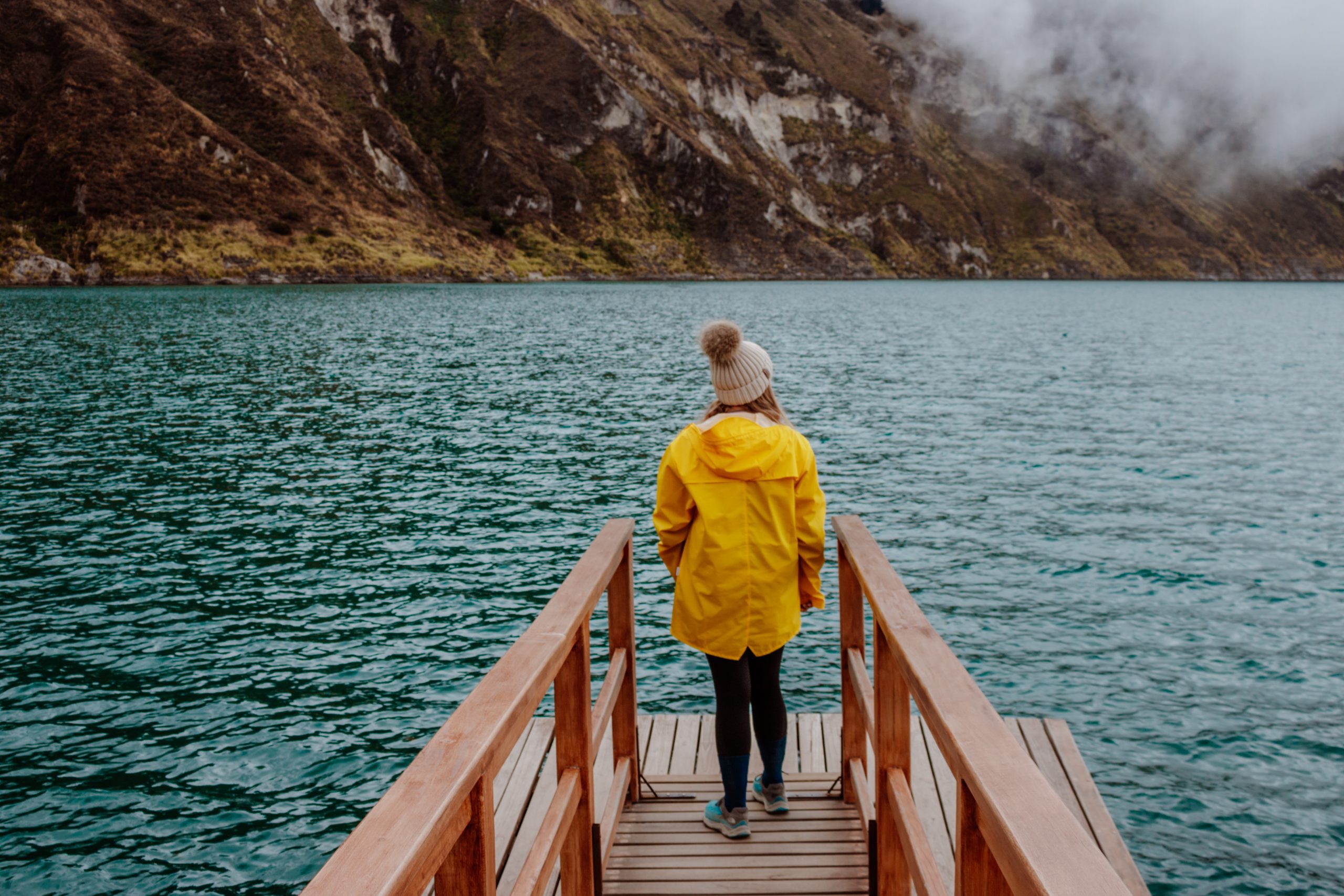
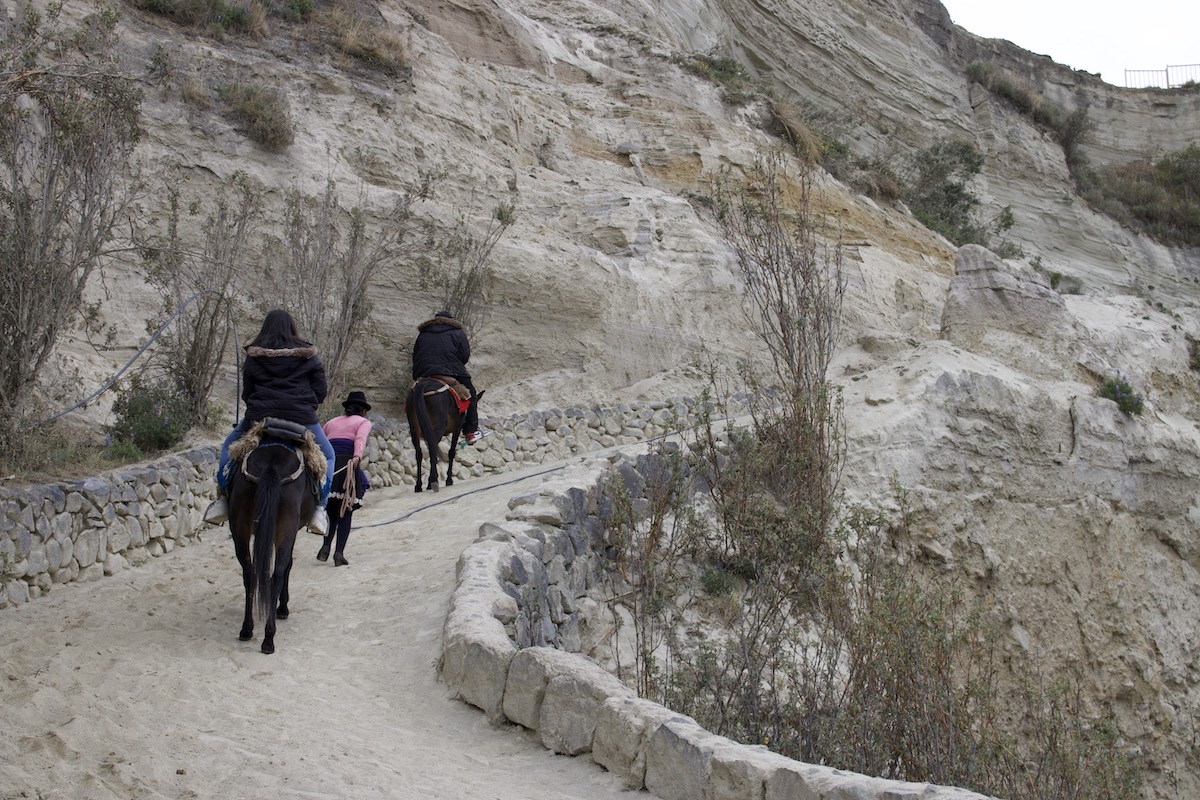

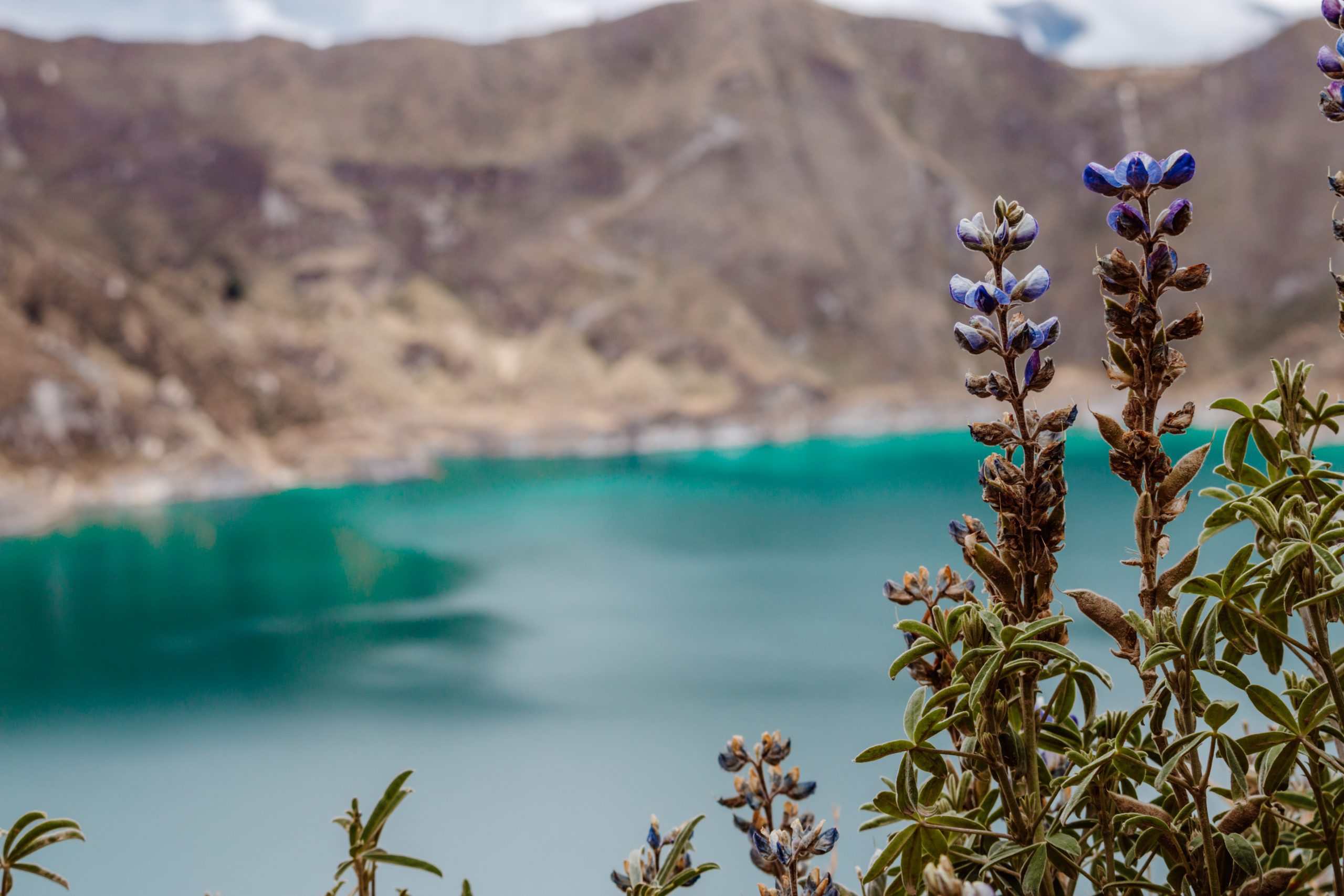
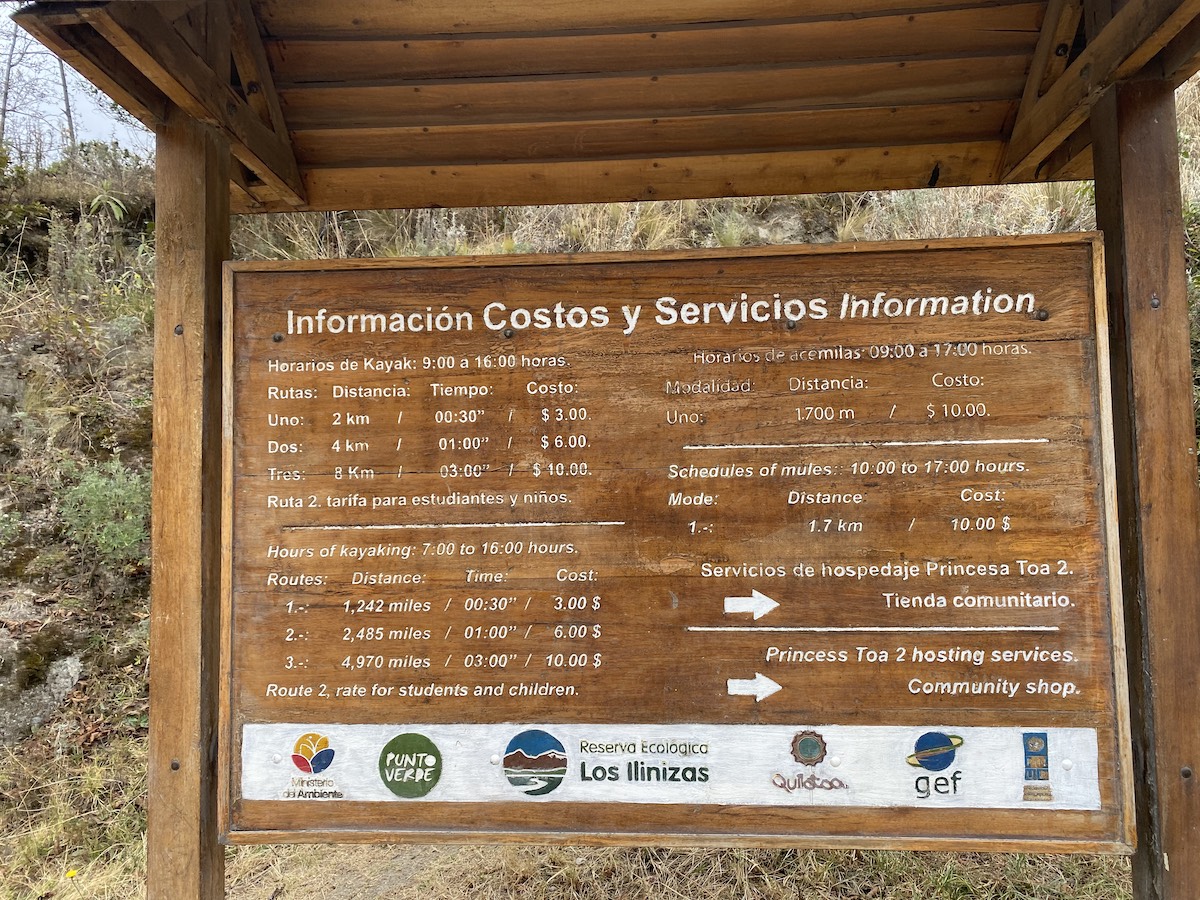

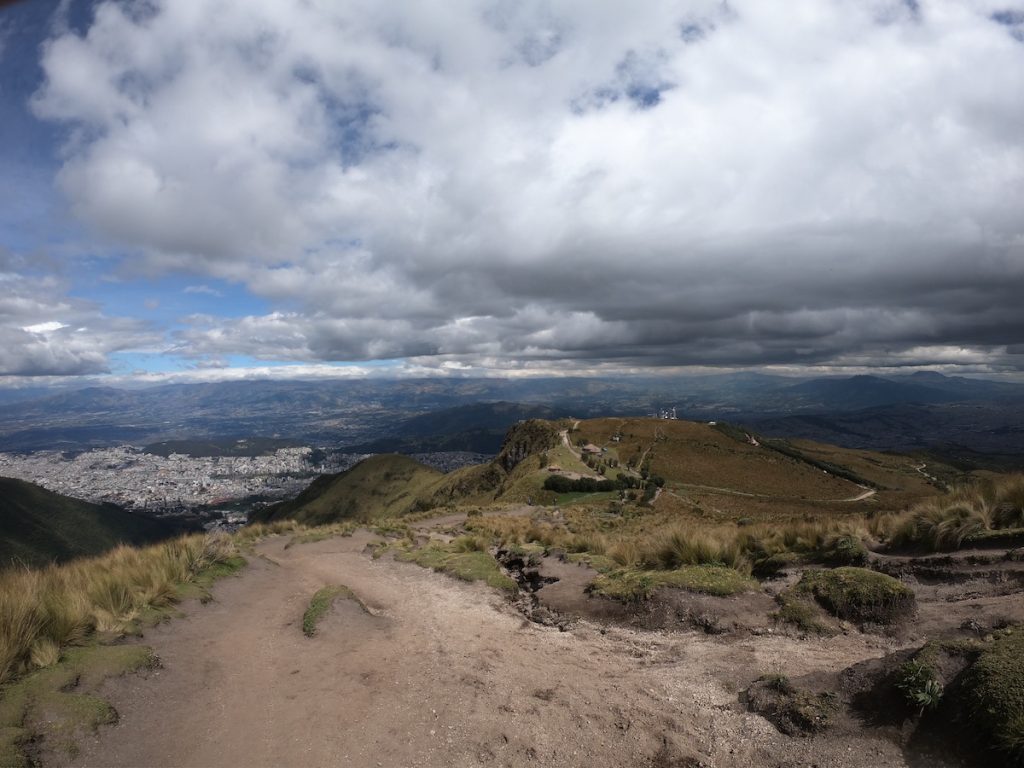
I really appreciate the section on local plantlife and bird watching. It’s refreshing to see nature-centered activities being promoted. Great job Oleg Galeev for highlighting the environmental aspects of Quilotoa!
Hey, thanks for the info on getting to Quilotoa by bus. Any advice on how much cash I should carry for the bus fares and small purchases? Wanna make sure I’m prepared.
AlexJ1982, it’s a good idea to have some extra cash on hand, as not all places may accept cards, especially in more remote areas. Around $50 should cover your bus fare and small expenses for the day.
Quilotoa’s lookin like a dope spot for budget trips. Good lookin out on those bus tips. Def gonna help stretch those dollars.
Absolutely enchanted by the idea of shopping for local handicrafts in Quilotoa. Does anyone have specifics on unique finds or must-visit stalls? I’m all for supporting local artistry.
While the article provides helpful insights on reaching Quilotoa, it slightly overlooks the challenges of high-altitude hiking for newcomers. It’s crucial for travelers to acclimatize properly and stay hydrated. Those visiting should take it slow during the first few days to avoid altitude sickness.
Quilotoa’s landscape and cultural backdrop seem perfect for a documentary piece. The vivid description of the crater lookout and local life ignites my creative spirit. I’m pondering potential themes to explore, perhaps focusing on environmental conservation or indigenous crafts.
Great to see the hiking routes detailed. Any tips on capturing the best shots of the Quilotoa Crater at sunrise or sunset? I’m aiming to add some stunning landscape shots to my portfolio.
I’m deeply concerned about the impact of increasing tourism on Quilotoa’s delicate ecosystem. While it’s wonderful to see the natural beauty and culture of this place shared, it’s imperative that visitors practice responsible travel. This includes sticking to established paths, limiting waste, and respecting local customs and wildlife. I’d appreciate if Oleg Galeev could address these points more thoroughly in future articles.
Anyone know the best time of year to hit up Quilotoa? Lookin to plan a trip with the squad next summer and wanna catch it at its best!
Quilotoa didn’t disappoint, folks. Took the bus from Quito using your guide, had a smooth ride, and breathtaking views awaited. For anyone on the fence, just go. It’s like nature’s version of a masterpiece painting.